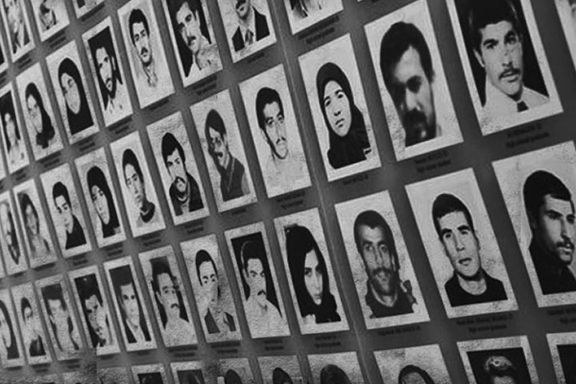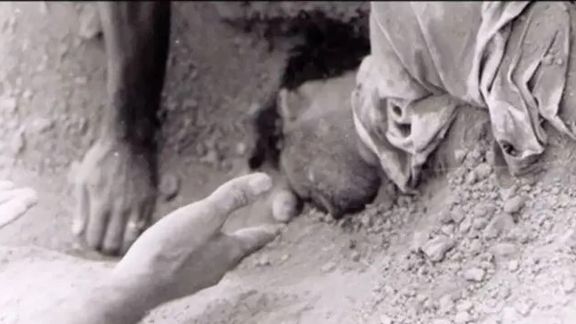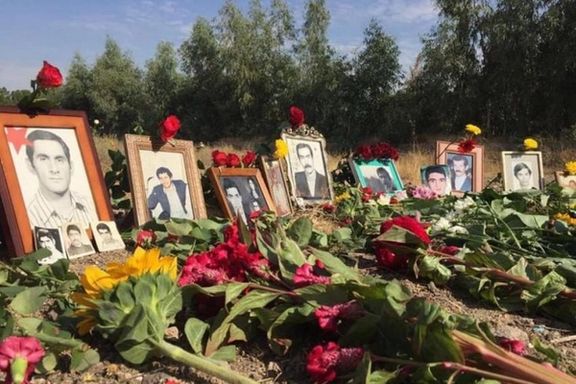Opinion - Russian Massacres In Ukraine And Prisoner Mass Murder In Iran

The author, whose brother was executed in Iran in 1988, argues that Russian atrocities in Bucha are not much different from mass killing of prisoners in Iran.

The author, whose brother was executed in Iran in 1988, argues that Russian atrocities in Bucha are not much different from mass killing of prisoners in Iran.
Opinion - Earlier this month, the world woke up to the horrific images of the bodies of dead civilians lying on the streets of Bucha, Ukraine — some with their hands bound, some with gunshot wounds to the head. These shocking images of bodies in the streets have led to an outpouring of international condemnation of Russia.
In response to accusations of war crimes, Russia's Ministry of Defense denied responsibility. Russia's ambassador to the UN, Wesley Nabin Zia, claimed that Moscow would present "practical evidence" to the Security Council, showing that its forces had nothing to do with the killings of Ukraine civilians. Russia's propaganda machine also claimed Ukrainian forces "staged" or carried out the war crimes themselves.
All dictators use the same playbook. In 1988, the Islamic Regime of Iran suddenly executed more than 5000 political prisoners, who had already been sentenced to prison terms, and spent several years behind bars. The only notice the families received from the authorities was a phone call or a short meeting with the authorities informing them that their children were executed because "they were apostates and had forsaken their Islamic religion." The victims' families were told not to mourn for their loved ones or organize memorial services. At the time that social media and satellite images were a dream of the future, the families found one of these mass graves, took some pictures, prepared lists of the names of people hanged, and sent them to the United Nations and Amnesty International and demanded an investigation,justice, and accountability.

Mohammad Jafar Mahallati, the Islamic Regime of Iran's ambassador to the United Nations at the time, just like Russia's Ambassador to the United Nations, denied the families' accusations and called the allegations about the mass executions "political propaganda against the Islamic Republic."
The 1988 massacre is now well-documented. Amnesty International and Human Rights Watch called the killings "ongoing crimes against humanity." In 2012, The Iran Tribunal, a one-of-a-kind grassroots movement modeled on the famous Russell Tribunal of the 1960s, came together to document the atrocities of the Islamic Republic of Iran during the 1980s. The presiding volunteer international judges, who are some of the highest human rights academics and jurists in the world, unanimously concluded that these crimes fit the definition of crimes against humanity, as described in the Rome Statute of the International Criminal Court. In 2013, Canada's parliament recognized the Massacre as constituting crimes against humanity.
Thanks to satellite technology, we know that Russia is lying and Ukraine's accusations are true. Iranians have similar photos of one of the mass graves, called Khavaran. Khavaran Cemetery is an irregular, unmarked cemetery located in southeast Tehran. Since early 1981, the Islamic Regime of Iran buried leftists opponents in Khavaran because "they were apostates and must not contaminate the resting place of Muslims."
Once the families received the news of the executions, a few went to Khavaran. These families witnessed shallow graves with plastic bags and pieces of clothing poking out of the soil. They started moving the dirt with their hands and found scores of bodies dumped on top of each other. Mothers and relatives of the victims were shocked and could not make sense of the unfolding scene. The families took some pictures of the atrocity around them. Part of the head and face of a young man were lying in the dirt, the hand of someone was hanging in the air, and there were pieces of clothing sticking out of the soil. These pictures proved the Islamic Regime of Iran's crime and show the length a brutal government is willing to go to eliminate its opponents.

To punish Russia for its crimes in Bucha, more sanctions against Russian banks and institutions were announced, and two adult daughters of Russian President Vladimir Putin, Russian Foreign Minister Sergei Lavrov's wife Maria and daughter Ekaterina, and members of Russia's national security council were added to the sanction lists.
In Iran's case, not only the people involved in these crimes against humanity did not receive punishment, but they also received higher posts. Khamenei, president at the time, was elevated to Supreme Leader and has ruled the country for the past 33 years with an iron fist. Mostafa Poormohammadi, the deputy intelligence minister, became Justice Minister. Hossein-Ali Nayeri, a religious judge in the revolutionary court, became President of the Supreme Disciplinary Court for Judges. Ebrahim Raisi, a deputy prosecutor, is now the Islamic Regime of Iran's President. The most shocking, though, is that Mohammad Jafar Mahallati, Islamic Republic of Iran's Ambassador to the UN, is now a religious professor at Oberlin College in Ohio and teaches peace and ethics, among other subjects!
Despite several letters that the family members of the victims of the 1988 Massacre have written to Oberlin College's President Ambar and the board of trustees and two protests that they organized in front of the college, the administration refuses to fire Mahallati.
Professor Jeffrey Robertson, human rights barrister, author, academic, and authority in crimes against humanity, concluded in his 2000 report about the 1988 Massacre that Mahallati is implicated in crimes against humanity, and the 2018 report of Amnesty International drew the same conclusion. Oberlin college claims that their internal investigation did not show that Mahallati knew about the Massacre, and thus he can continue to teach American students!
Back in 1988, the International Criminal Court was not established yet. Crimes against humanity and enforced disappearance were not codified into the law the way it is now. Still, Iran was one of the signers of the Genocide Convention of 1948, the Geneva Convention of 1949, and the International Covenant of Civil and Political Rights of 1966. Thus the Islamic Regime of Iran was bound by these rules. Furthermore, Amnesty's Senior Research Adviser wrote, "All former and current officials who continue to treat the mass killings as state secrets effectively stand with those who have blood on their hands." All of these should be enough for a Liberal Art College with an honorable past, such as Oberlin College, to do the right thing and terminate the employment of Mahallati, who preaches peace when he's done so much to disrupt it.
As an Iranian-American, I have long watched the human rights abuses back home viewed as a sideshow to broader international policy fights. But most difficult of all has been watching Americans who say they're committed to protecting human rights ignore the Iranian people's suffering—past and present. The unfortunate event in Ukraine, the bravery of its people and leaders, and the war crimes committed by Russia have created a new chapter in diplomacy. One can only hope that these new conversations will be extended to Iranians and their four decades' plight, and finally, the international community help the families of the victims of this brutal regime receive some form of justice and accountability.
Opinions expressed by the author are not necessarily the views of Iran International